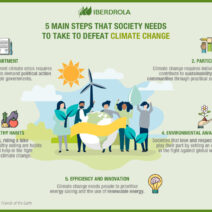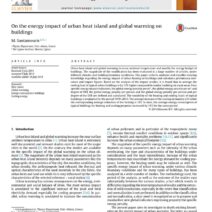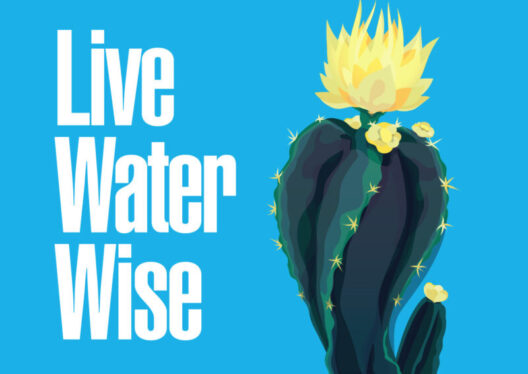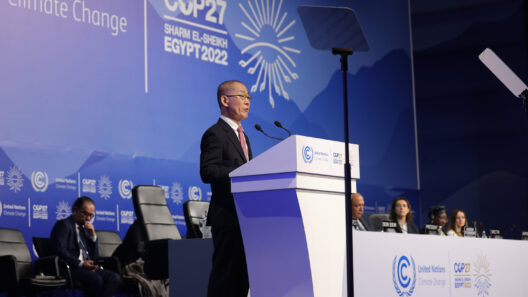As climate change increasingly dominates global discourse, it invites scrutiny across various societal sectors, including the media. In the realm of animated television, few shows have carved a niche as distinctively subversive as South Park, helmed by the provocateurs Trey Parker and Matt Stone. Their brand of satire often targets environmental issues, leading to questions surrounding their perceived stance on climate change. Are they, in their irreverent humor, inadvertently dismissing the urgency of climate action, or is there a deeper, more complex narrative at play? This exploration aims to dissect the duo’s contributions, with a particular emphasis on their commentary about climate change.
The comic landscape of South Park is characterized by its unabashed fearlessness in addressing contentious topics. This animated series serves as a hyperbolic mirror reflecting society’s vices, foibles, and absurdities. When Parker and Stone embark on a journey to dissect environmentalism, they delve into a multifaceted tapestry that interlaces humor with poignancy. Yet, this leaves audiences pondering: Do their comedic jabs translate into anti-environmental sentiment, or do they provoke critical thinking about the cultural perceptions of climate issues?
To unravel this conundrum, one must consider the episodes that tackle climate change explicitly. Episodes like “A Scause for Applause” and “The Pandemic Special” highlight the contradictory behaviours often displayed in response to ecological crises. In “A Scause for Applause,” the narrative focuses on climate activism, selectively critiquing the performative nature of some environmentalists. It probes the notion that merely adopting ‘green’ labels does not equate to genuine commitment. Through satire, the episode reveals the incongruity between extensive environmental discourse and the actions that follow. Is laughter at the folly of hypocrisy an indictment or an invitation to self-reflection?
Parker and Stone utilize their platform to illuminate societal absurdities, albeit through a lens that oscillates between skepticism and advocacy. Their portrayal of climate crisis scenarios often borders on bleakly comedic. They cultivate a worldview where caricatures of climate activists stand alongside those dismissing the threat altogether. This duality can be likened to the chaotic interplay of apocalyptic predictions amid everyday occurrences: at one end lies the impending doom, and at the other, human triviality.
The duo’s approach does not shy away from confronting the malaise of inaction, but, paradoxically, they also romanticize certain aspects of environmental degradation. The characters’ misadventures often echo the sentiment that, in an age of climate anxiety, actual activism lacks substance. For instance, the satirical narrative critiques those who advocate for environmental preservation while remaining apathetic toward systemic change. In doing so, the show urges viewers to scrutinize their engagement with eco-conscious practices.
Contrastingly, Parker and Stone often integrate a pop-cultural lens into their critique, showcasing how climate change has been commodified. Through the lens of their animated world, they illustrate a societal penchant for oversimplifying grand narratives into bite-sized slogans. The absurdity of using carbon offsets as a marketing tool or the commercialization of environmental disasters is a recurring motif that raises questions about sincerity within the environmental movement. Is this branding of climate consciousness diluting the gravity of the issue?
Yet, in their quest to satirize, Parker and Stone are not devoid of creative optimism. Episodes such as “Tweek x Craig” highlight interpersonal relationships against the backdrop of societal turbulence. While not overtly focused on climate change, the microcosm of human connection and the need for solidarity in the face of adversity plays a critical role. The emotional depth encapsulated in these narratives hints at the power of grassroots movements, suggesting an alternative to the despair often associated with climate discussions.
Moreover, the discourse surrounding climate change necessitates an understanding of intersectionality. The notion that those disproportionately affected by environmental degradation often reside in marginalized communities is subtly woven throughout South Park’s narrative. Parker and Stone delve into environmental justice issues, albeit in a typically irreverent manner that can be misconstrued as capriciousness. The characters, while often depicted in ludicrous circumstances, symbolize broader societal failures to address the interconnectedness of environmental decay and equality.
Conclusively, the question remains: Are Trey Parker and Matt Stone anti-climate change? Rather than adopting a black-and-white stance, their oeuvre elucidates the multifaceted dilemmas surrounding climate discourse. They traverse a spectrum of critique—from highlighting the hypocrisy of eco-friendliness to championing human resilience. This juxtaposition reflects the complexities of a world in climatic turmoil, where flooding sarcasm acts as both a balm and a scathing critique of societal apathy.
The overarching narrative of South Park posits that environmental issues are not merely themes to be ridiculed but are salient crises demanding rigorous engagement. Parker and Stone possess a unique ability to marry absurdity with veracity, prompting viewers to grapple earnestly with the implications of climate change. While they may not fit neatly into boxes of advocacy or opposition, their contribution undeniably incites necessary dialogue within an entertainment landscape often fraught with insipidness. Through laughter, they compel us to confront the uncomfortable truths woven into the fabric of our climate narrative.







